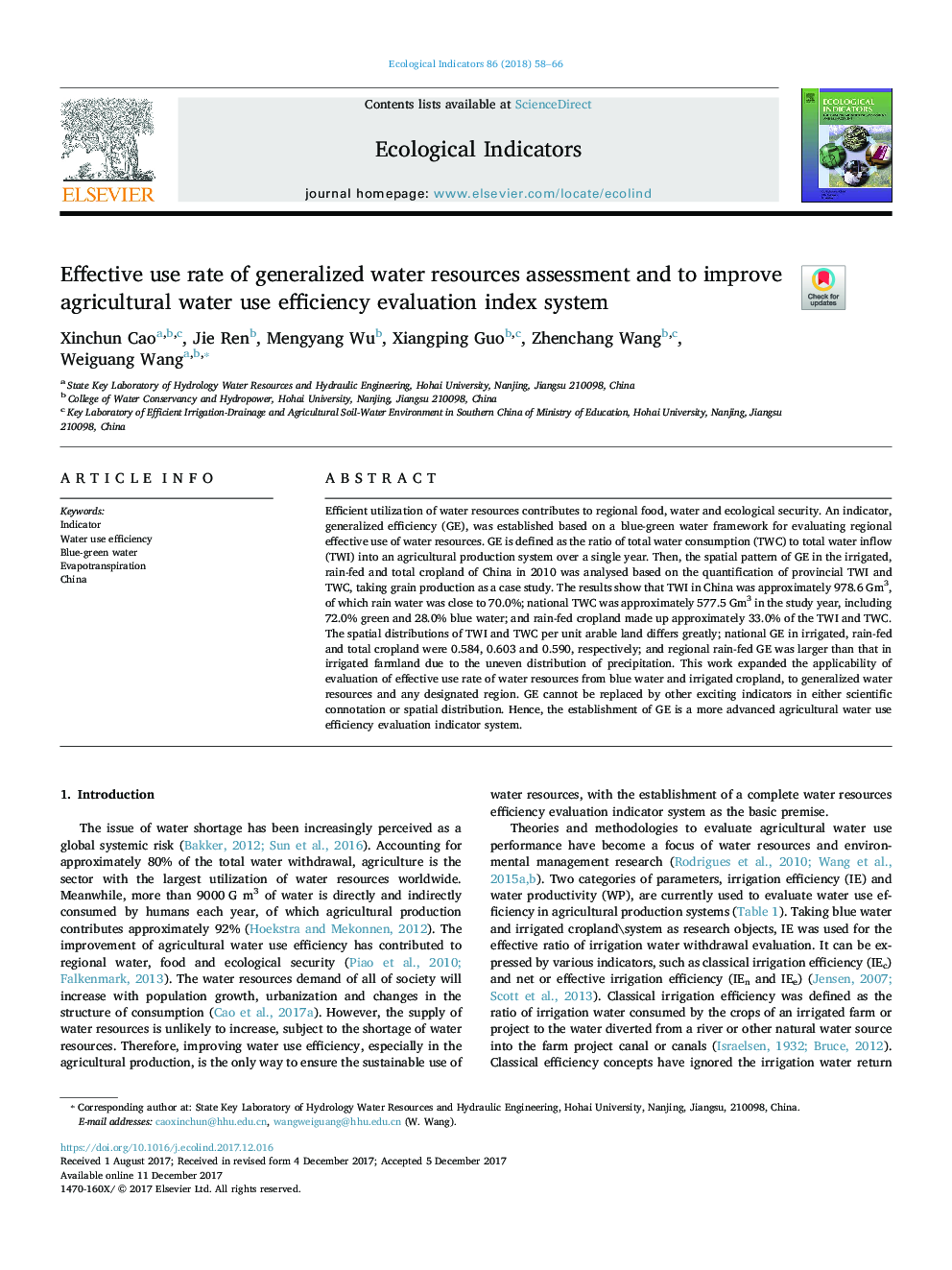| Article ID | Journal | Published Year | Pages | File Type |
|---|---|---|---|---|
| 8845625 | Ecological Indicators | 2018 | 9 Pages |
Abstract
Efficient utilization of water resources contributes to regional food, water and ecological security. An indicator, generalized efficiency (GE), was established based on a blue-green water framework for evaluating regional effective use of water resources. GE is defined as the ratio of total water consumption (TWC) to total water inflow (TWI) into an agricultural production system over a single year. Then, the spatial pattern of GE in the irrigated, rain-fed and total cropland of China in 2010 was analysed based on the quantification of provincial TWI and TWC, taking grain production as a case study. The results show that TWI in China was approximately 978.6Â Gm3, of which rain water was close to 70.0%; national TWC was approximately 577.5Â Gm3 in the study year, including 72.0% green and 28.0% blue water; and rain-fed cropland made up approximately 33.0% of the TWI and TWC. The spatial distributions of TWI and TWC per unit arable land differs greatly; national GE in irrigated, rain-fed and total cropland were 0.584, 0.603 and 0.590, respectively; and regional rain-fed GE was larger than that in irrigated farmland due to the uneven distribution of precipitation. This work expanded the applicability of evaluation of effective use rate of water resources from blue water and irrigated cropland, to generalized water resources and any designated region. GE cannot be replaced by other exciting indicators in either scientific connotation or spatial distribution. Hence, the establishment of GE is a more advanced agricultural water use efficiency evaluation indicator system.
Related Topics
Life Sciences
Agricultural and Biological Sciences
Ecology, Evolution, Behavior and Systematics
Authors
Xinchun Cao, Jie Ren, Mengyang Wu, Xiangping Guo, Zhenchang Wang, Weiguang Wang,
